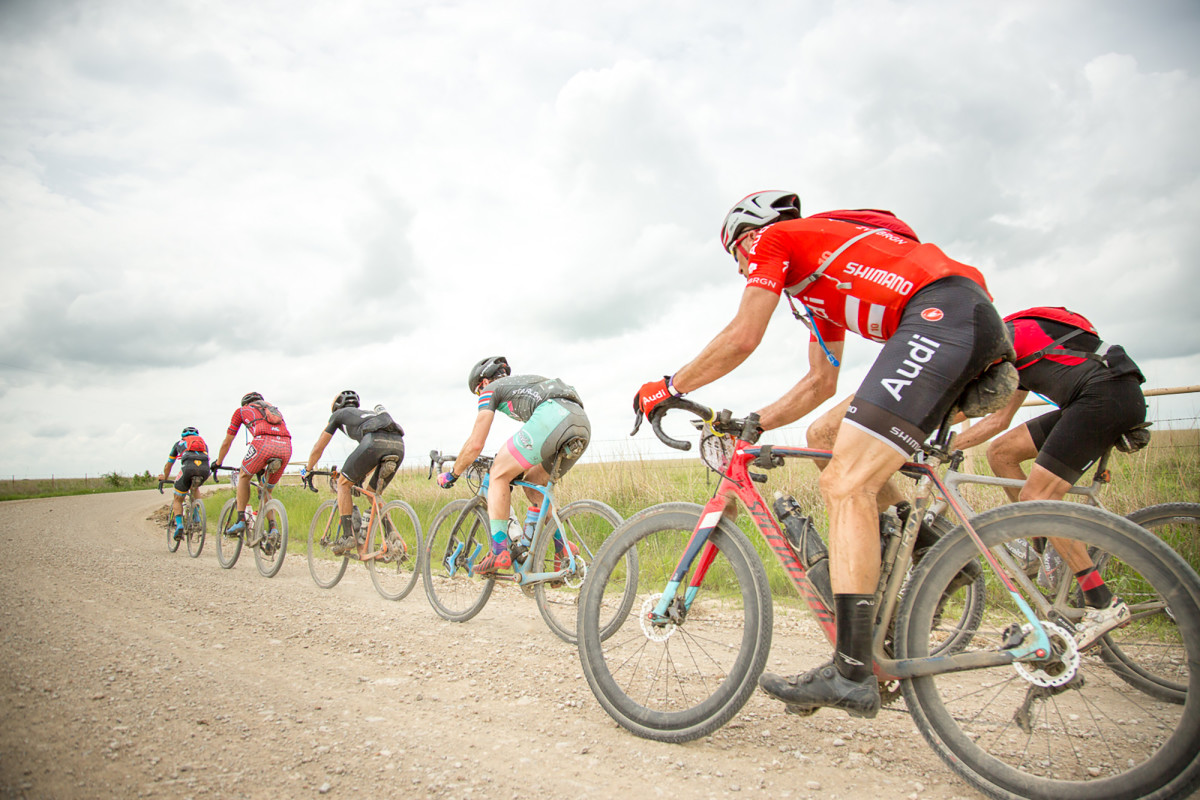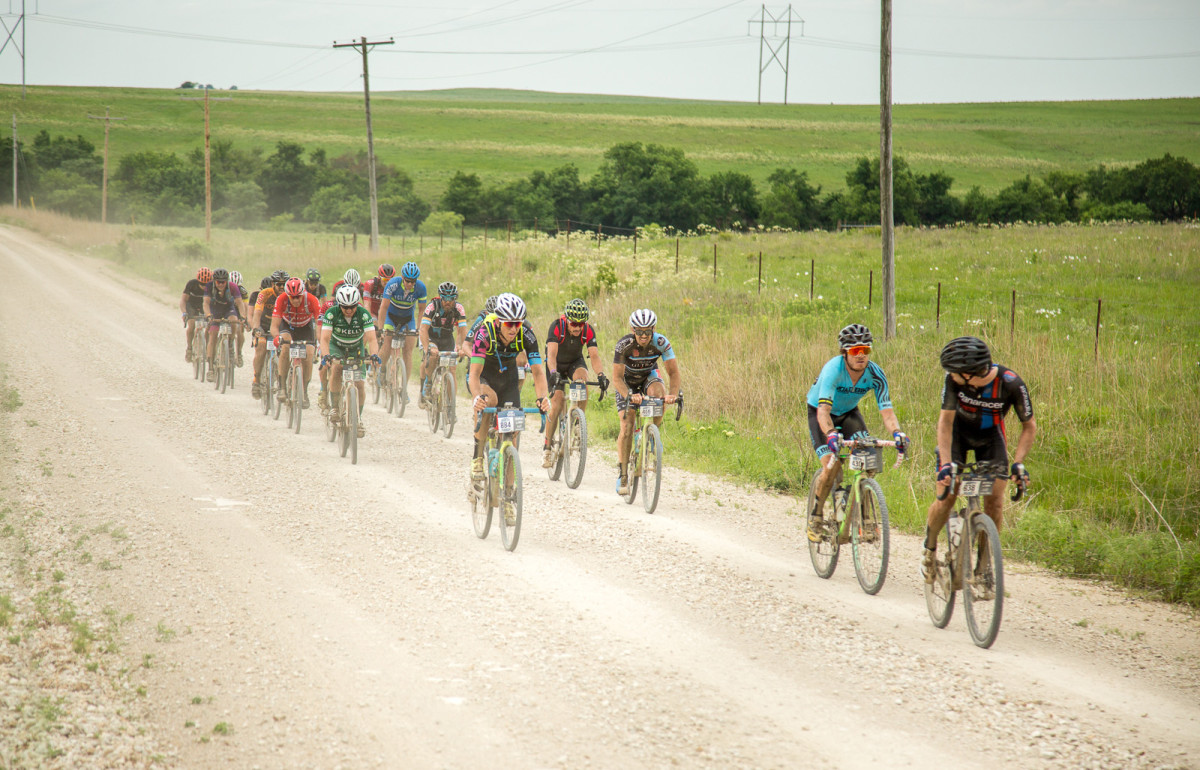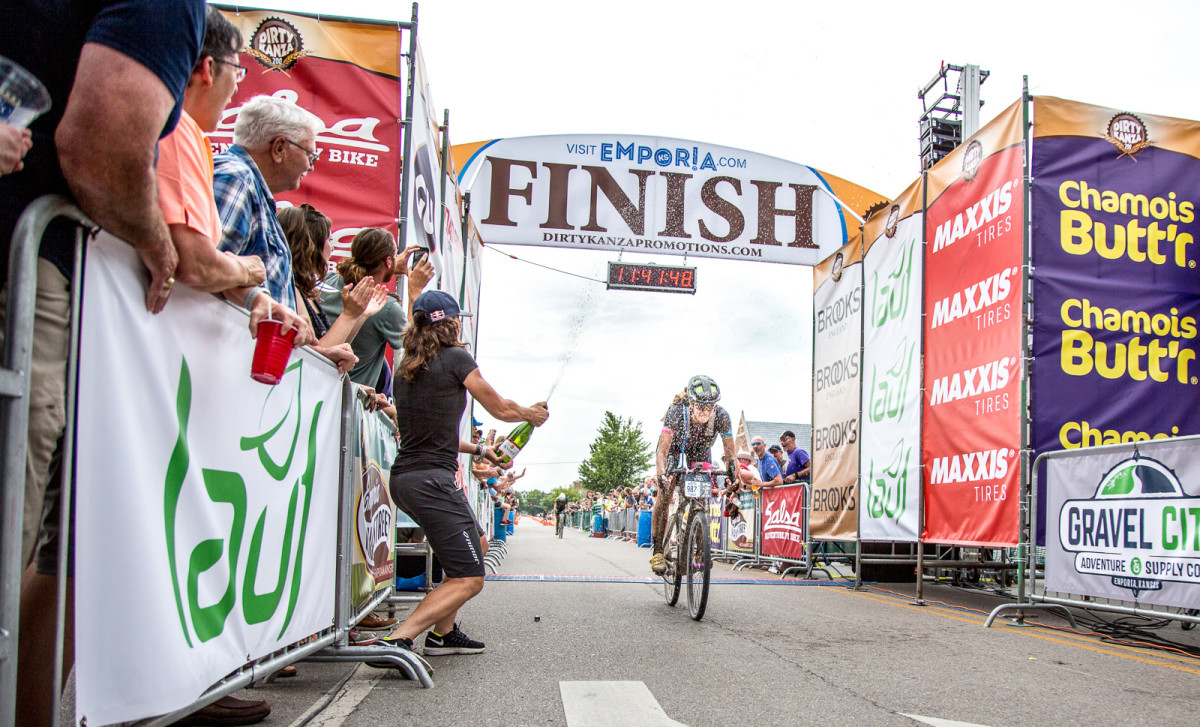What it's like to race in the Dirty Kanza 200

The gravel roads of eastern Kansas broke my spirit somewhere around mile 70. Two hours before I had been cruising along the trails of the Dirty Kanza 200 bike race. When I reached the first checkpoint, 48 miles in, I had been sure I could race against the light and complete the 206-mile course before sunset. But by 11 a.m., my carbon bike was heavy and slow, the remaining 136 miles stretching out before me. You won’t finish, I feared.
Dirty Kanza is a double century bike race on fire roads around Emporia, Ks. On a good year—Saturday, Jun. 4, 2017, for example—the winds are low and the roads are dry, the sun doesn’t scorch and the humidity isn’t oppressive. The lead racers take about 11 hours, and around 80% of riders finish. On other years, rain can turn the trails to thick clay, winds can blow riders off their bikes and temperatures can soar. Few finish in daylight, many fail to make the 20-hour cutoff and others abandon the attempt.

But even on a good year, the race presents a significant challenge to bike, body and brain. Finishing DK, regardless of the conditions or the time, has become a badge of honor in the endurance-racing world.
Riders obsess over equipment choice. Razor sharp gravel can shred tires, and clogging mud can jam and even break derailleurs (the device that changes the bike’s gears). Carrying tools and spares is a must, but how much do you need? Every extra ounce carried drags you down, until you pop your last spare tube and wish you’d brought just one more.
Apart from three checkpoints, spaced roughly 50 miles apart, the race is unsupported. Riders need to carry their own food and drink, although occasional locals watching the race from farmhouses will hand out water. Rescue will come if called, but the remoteness of much of the course means it will come slowly.
The rise of cycling's gravel grinders: Ruthless terrain, camaraderie and dirt
Despite the physical terrain, perhaps the biggest challenge of all for Dirty Kanza racers is mental. The countryside south of Emporia is both beautiful and desolate. Rolling farmland stretches to a seemingly infinite horizon. There are no mountains looming in the distance, no cityscapes with their towering skyscrapers. Many of the roads are on a grid system, straight lines with meaningless names: numbers running east to west, letters running north to south. Turns on the DK course are sharp right angles.
Some riders bring music and plug in headphones to break the monotony. Others ride in groups with friends, or even with a partner on a tandem bicycle. Unwilling to dilute the difficulty, I opted for none of those distractions, seeking to stay in the moment, even if that moment might last 20 hours.

Instead, I stared at the screen of my bike computer, willing the miles to tick by. Gritting my teeth to make the summit of each hill—don’t let anyone tell you Kansas is flat—without rolling to a standstill. I dared myself to stay off the brakes on the descents, conserving speed.
I nervously kept an eye on my front tire, too. I was riding on tubeless tires with liquid sealant inside that would theoretically self-heal minor punctures. But the valve was leaking. As the air drained, the tire dragged in the dirt and each rock I rolled over jolted the handlebars. I anguished over stopping to put in a tube instead, but the leak was imperceptibly slow. Just keep moving.
By the time I reached the third checkpoint, at 5:12 p.m., nearly 12 hours after I started, the winning male rider, Mat Stephens, had already finished. Alison Tetrick, who would take the women’s title from two-time defending champion Amanda Nauman by just five seconds, was less than 30 minutes from Emporia.
Hours before, local rider Warner Blackburn had passed away from a heart attack while taking part in a shorter, 50-mile course. Blackburn’s family came down to add their voices to the crowd along the final straight, and have since begun collecting memorial donations towards Dirty Kanza. The 12-year-old race has become part of the fabric of its hometown. Merchant St. in Emporia would have been buzzing with both excitement and melancholy.
I hit a wall as I pulled out on that final stretch. Perhaps stopping to pump tires, refill water, and grab extra food had taken too long, the energy and urgency I’d felt rolling into that checkpoint evaporating as the seconds ticked by. My hands were numb from gripping the handlebars for half a day. My right knee hurt. My butt ached from 11 hours in the saddle. My stomach yearned for real food, and turned over at the thought of eating more sickly sweet energy gel.
How extended breaks in training help elite athletes—and why you should take them too
I fought to stay on task, to shut out negativity. Barring a serious mechanical failure, I would reach the finish line, but in darkness. And then I’d walk away from the Dirty Kanza, mission accomplished. No reason to come back, ever.
I looked for somewhere to pull over, to rest and recover for a few minutes. To waste enough time that at the very least I wouldn’t be haunted by the possibility of still somehow reaching Emporia before sunset.
But disconnected from the battle raging in my mind, my legs kept churning. Suddenly, unexpectedly, the road flattened out. Ruts and rocks replaced by smooth, hard-packed gravel. My average speed began drifting back up. Miles ticked by. To the west, rays of light fanned out from behind a cloud. I can still beat the sun, I thought.

I crossed the finish line just after 8:25 p.m.—14 hours, 25 minutes and 31 seconds after starting. The sun was still shining, barely. Hours later, nauseous from dehydration and unable to eat, my throat raw from breathing dust all day, my brain threw in one last twist: Next year I’ll go faster.
